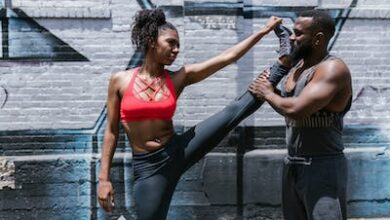Which Are Worst Draft Picks in NFL History?

Dive into the tumultuous history of the NFL with a revealing exploration of the worst draft alternatives within the league’s storied past. From excessive-profile disappointments to regrettable choices, uncover the missteps that haunt franchises and serve as cautionary tales.
There are several stories on the worst draft picks in NFL history, and every time you read one, you learn something new. Consider authoring a piece on the worst NFL draft selections ever made. I was able to gain more knowledge about some of the most mysterious players that have ever worn a Sunday uniform because of this.
This piece will concentrate on a few of the worst NFL draft selections ever made. Instead than concentrating only on “busts,” this piece will examine teams that made terrible draft decisions. I’ll consider how each draft’s decision regarding their pick after it affected where they ended up on this list.
It is evident from this list that some of the worst “busts” in NFL history are ranked rather low, while others who had respectable performances are far higher.
Well, it seems fascinating, let’s have a look.
Derrick Harvey, DE, Jacksonville Jaguars Draft Pick:
Florida was selected eighth overall in the 2008 NFL Draft.
Career Stats: 32 trips and 8 sacks
Recall that the focus of this article is on the poorest draft selections in NFL history rather than the greatest flops. Derrick Harvey will not be wearing a Jacksonville Jaguars uniform, but he still has an opportunity to show himself. Three disappointing seasons later, they let him go before the 2011 campaign began.
Before the 2008 NFL draft, a number of scouts expressed doubts about this prospect. His motivation and enthusiasm to play at the next level came under scrutiny after a disappointing 2007 season at Florida.
The fact that Jacksonville moved up to the Baltimore Ravens in the first round of the draft just serves to exacerbate the whole problem. To get Harvey in the top 10, they forfeited two third-round selections and one fourth-round selection. Mario Manningham, Cliff Avril, and Michael Finley were among the players that those mid-round selections may have selected.
Eddie Brown, wide receiver, Cincinnati Bengals
Draft selection: Miami, Florida, 13th overall in the 1985 NFL Draft
Career stats: 41 touchdowns, 6,134 yards, and 363 catches
Eddie Brown had a successful career; that much is certain. The player who was selected in the 1985 NFL draft at the same position as the one-time Pro Bowl pick is the reason he is on this list.
Bill Walsh and the San Francisco 49ers selected Jerry Rice just three choices after Cincinnati selected the “bigger name.” What came next were careers that met in Super Bowl XXIII a few short years later.
Jerry Rice caught 11 catches for 215 yards and a touchdown as the San Francisco 49ers defeated the Cincinnati Bengals 20–16. Brown, on the other hand, was limited to just four receptions for 44 yards.
The trajectory of each of these players’ careers was best summed up by this particular game. Rice went on to become the best wide receiver to ever wear an NFL uniform, while Brown would play for Cincinnati for just three more seasons.
Pat Sullivan, quarterback, Atlanta Falcons:
Auburn was selected in the second round of the 1972 NFL Draft.
Career stats: 16 interceptions, 5 touchdowns, 42.3 completion %, 5 starts, and a 36.5 quarterback rating.
This was a terrible choice for several reasons. Firstly, they are some of the worst quotes you have ever heard from an NFL quarterback. Just look at those horrifying statistics.
During the 1974 season, Pat Sullivan’s poor performance as an NFL quarterback led to his benching in favour of Bob Lee and Kim McQuilken, who combined for 23 interceptions and three touchdowns. The three quarterbacks for the Atlanta Falcons that season combined for the following stat line:
1,781 yards, four touchdowns, 31 interceptions, 44.9 completion percentage, and 27.8 quarterback rating. It goes without saying that after that dismal 1974 season, Sullivan started just one game in his career.
Philadelphia Eagles defensive end Mike Mamula
Draft Pick: Boston College, seventh overall in the 1995 NFL Draft
Career stats: 209 tackles, 31.5 sacks, and 77 games
It’s not like there were a ton of superstars selected in the 1995 NFL Draft. First overall went Ki-Jana Carter (more on him later), and J.J. Stokes was really selected among the top ten.
The guys that were available later in the draft are what made Mike Mamula and those two players’ picks worse. Warren Sapp, a player for the Philadelphia Eagles in a needing position,
was overall chosen in the twelfth position. Additionally, Ty Law and Derrick Brooks were quite valuable at the conclusion of the first round.
Los Angeles Rams quarterback Terry Baker
Draft Pick: Oregon State was selected first overall by the NFL in 1963.
Career stats: 4 interceptions, 0 touchdowns, and 1 start
The only guy to win the Heisman Trophy and compete in the Final Four in the same season is Terry Baker. This demonstrates the exceptional athleticism of the Minnesota native.
But this quickness didn’t translate to the NFL. Over the course of his brief three-year career, he only appeared in 18 games and made one start.
Amobi Okoye, defensive lineman, Houston Texans;
selected 10th overall by Louisville in the 2007 NFL Draft
Career totals: 165 tackles, 15.5 sacks, and 59 starts
Many draft experts were taken aback when the Houston Texans selected this 19-year-old Nigerian, who was regarded as a physical monster but incredibly raw, with the 10th overall choice in the 2007 NFL draft.
Not because Okoye didn’t play well during his four seasons with the Houston Texans; rather, it was more about his inability to understand the subtleties of the game and his severe weakness in a number of areas. Following a rookie season in which he had 5.5 sacks, he would only equal that number in the following three seasons.
Huey Richardson, LB, Pittsburgh Steelers;
selected from Florida with the 15th overall pick in the 1991 NFL Draft
16 games in his career
There were hints that the Steelers turned to Richardson as a backup after their three main targets had already been taken. Leonard Russell and Alvin Harper were two of the guys. It would be an understatement to suggest that Pittsburgh was unprepared for a backup plan.
In his final season at Florida, Huey Richardson was named to the first team of All-America players. High hopes were raised that the linebacker would go to the next level of playmaking excellence.
That was never the case. After the season, he was moved to the Washington Redskins, having only appeared in five games with the Steelers.
Peter Warrick, wide receiver with the Bengals
Draft Pick: Florida State, fourth overall in the 2000 NFL Draft
Career stats: 2,991 yards, 18 receiving touchdowns, and 275 catches
It’s not like Peter Warrick’s NFL career was awful. He actually appeared in a Super Bowl with the Seattle Seahawks and caught over 50 receptions in each of his first four NFL seasons.
It’s more about the wide receivers selected in the third, fourth, and eighth rounds, respectively, that came after the former Florida State All-American: Laveranues Coles, Darrell Jackson, and Plaxico Burress.
Notably, R. Jay Soward and Sylvester Morris were also chosen in the first round of the 2000 NFL draft. Together, they received 62 receptions in their
careers.
Conclusion:
In the annals of NFL records, the worst draft alternatives stand as cautionary reminders of the high-stakes nature of player choices. From star-crossed possibilities to erroneous selections, these selections have left indelible marks on franchises and reshaped the trajectories of careers. As the league evolves, teams and fans alike mirror on these draft blunders, emphasizing the importance of astute choice-making in the pursuit of gridiron fulfillment. The memories of the NFL’s worst draft choices serve as instructions in resilience, version, and the continued quest for the elusive method that defines a successful draft method.”



